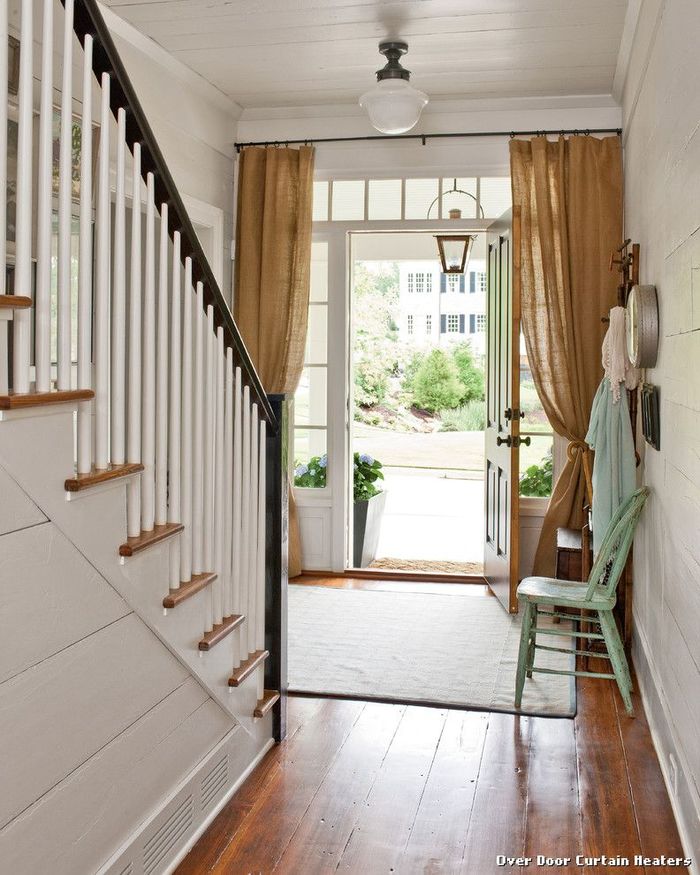#3033. Bright Classical Hallway with Wooden Staircase: Blending Tradition and Comfort

This country interior represents an excellent example of harmonious combination of classical architecture and rustic simplicity. The entrance hallway welcomes us with a bright and airy atmosphere thanks to white walls and ceiling that serve as a perfect backdrop for warmer elements. The wooden floor made of wide planks with a rich dark brown tone creates a sense of solidity and comfort, while simultaneously emphasizing the historical authenticity of the space.
The staircase with white balusters and dark wooden steps and handrails is the central architectural element of this space. The contrast between light and dark elements creates visual interest, emphasizing the clean lines of the design. This technique of facade and entrance group design can be successfully applied in many country houses where preserving a classic feeling is important without sacrificing modern functionality.
The textile elements of the interior deserve special attention — sandy linen curtains that softly frame the glass front door, adding warmth and homey comfort to the space. Light penetrating through the glass door panels and transom window floods the hallway with natural illumination, highlighting the texture of the wooden floor and white walls.
The interior skillfully utilizes a minimalist approach to furniture: a mint-green vintage chair by the entrance serves both functional and decorative purposes, adding a touch of color to the neutral palette. The ceiling light fixture with a milky-white shade in the style of early 20th century schoolhouse lamps complements the historical atmosphere of the space, creating soft, diffused lighting.
The view through the open door to the well-maintained landscape and neighboring building with traditional shutters creates a sense of connection between interior and exterior spaces, which is a key element of modern country design. This interior demonstrates how to create a warm, welcoming space using classical architectural elements and natural materials.